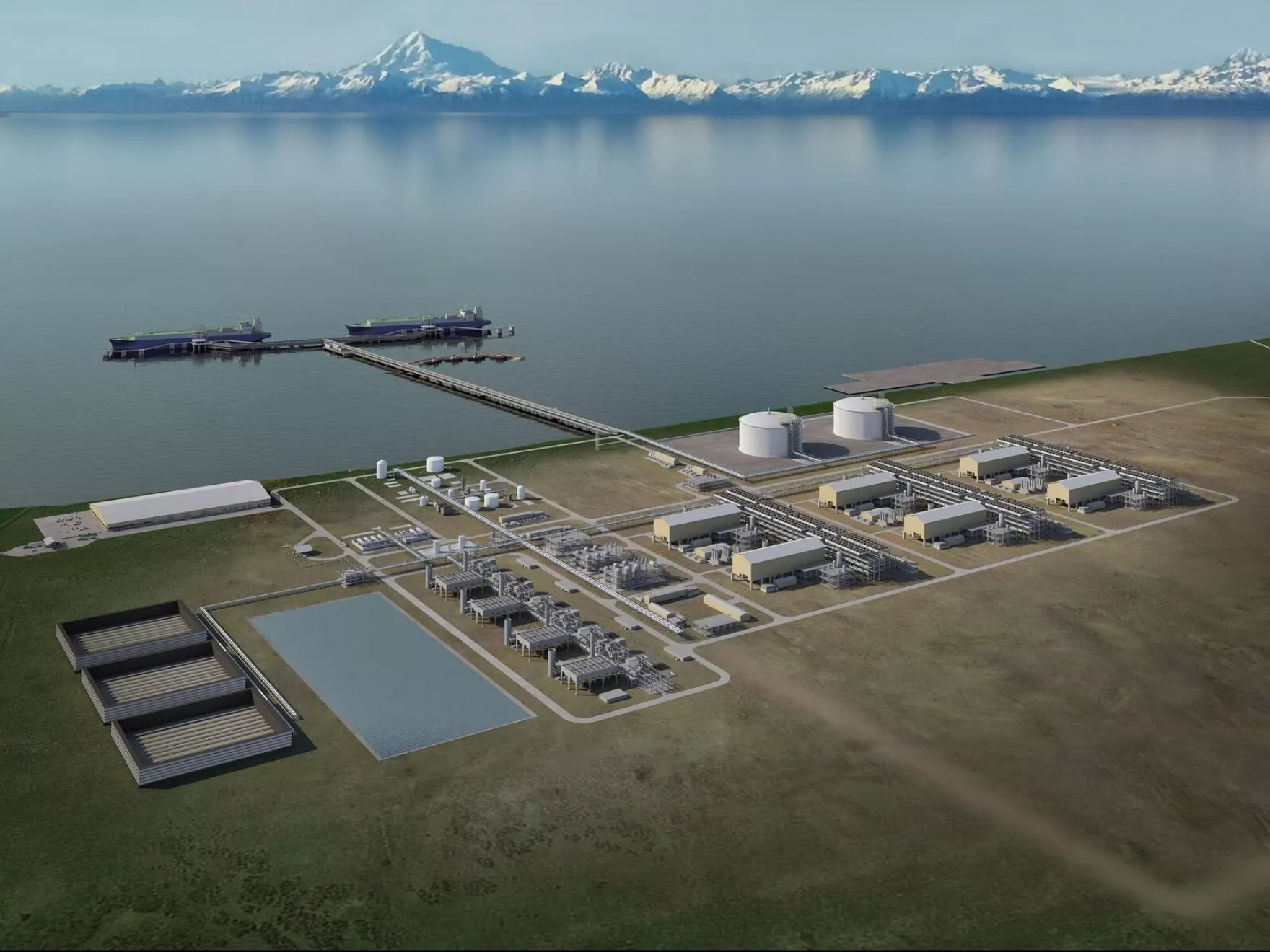Alaska politicians remain optimistic about AK LNG even as overseas … – Alaska Public Media News
The long-sought Alaska Liquefied Natural Gas project would bring natural gas from the North Slope down an 800-mile pipeline to Nikiski, where it would be liquefied, then shipped to Japan and South Korea. Versions of the project have been discussed for decades, but a huge price tag has meant slow progress. Alaska officials promote the pipeline as a way for allies in Asia to end their dependence on Russian natural gas.
Prominent Alaska politicians remain optimistic, even after a July Wall Street Journal article reported that potential buyers aren’t interested.
In August, during a visit to the Kenai Peninsula, U.S. Sen. Lisa Murkowski said the project remains an opportunity but she acknowledged the obstacles. She said Alaska continues to have a strategic advantage in exporting gas to East Asia.
“We do it in a shorter route than anywhere else in the country, and we do it with no choke points,” Murkowski said. “So there are so many advantages that the Alaska LNG project holds.”
In May, Gov. Mike Dunleavy brought energy leaders together in Anchorage to discuss the project, where U.S. ambassador to Japan Rahm Emmanuel said the project could offer energy stability in Asia and create jobs in Alaska. Murkowski’s fellow Alaska Sen. Dan Sullivan was also there, and said the state is well-positioned to provide natural gas internationally.
Enthusiasm about the project rose in 2022, when Russia invaded Ukraine, giving Alaska the opportunity to step into the vacuum of Russian LNG.
Kenai Peninsula Borough Mayor Peter Micciche expressed confidence after a June meeting with the Alaska Gasline Development Corporation.
“I’m a glass-is-half-full kind of guy. Obviously, I’m very disturbed by what’s going on in Ukraine, but the shift of energy supplies to western Europe has opened up some doors for the AK LNG project,” he said. “And that is a very good thing for the Kenai Peninsula as a whole.”
Micciche said the pipeline could also be a boon to the Cook Inlet region, where producers are projecting a natural gas shortage and higher energy costs in just a few years.
The Gasline Development Corp’s CEO Frank Richards said that’s a big part of the project’s mission; he said that about 18% of the project’s volume would stay in state to meet Alaska’s energy needs, while the rest would be exported.

The project has gotten pushback from environmental groups all over the country. The Sierra Club sued the federal government last month for its approval of the project, saying the Biden administration failed to fully consider the climate and environmental harms of the pipeline, like the tapping of methane gas in the arctic.
Wall Street Journal reporter River Davis said, when she first started looking into the topic, that was one of the obvious drawbacks. But she said it soon became clear there was a general ambivalence about the project among Japanese and Korean buyers.
“They felt that this project has been going on for a long time, and it just hasn’t had much progress,” she said.
Davis said those buyers have better options, from elsewhere in the U.S. and abroad, and the long timeline of AK LNG makes it undesirable. She said because of how long the project has been in the works, buyers in Asia are dubious it will ever get off the ground.
Davis said there seems to be an information divide between Asia and Alaska about how serious interest in the project is.
“Talking to companies here, they say there’s not much interest in this project,” she said. “But I’m not sure to what extent that has been directly conveyed to people sitting directly in Alaska.”
Roger Marks, a retired state petroleum economist, also doubts AK LNG will ever become a reality. He’s long been skeptical about the project’s big upfront infrastructure costs and Alaska’s relative value to LNG importers.
“Alaska always had this problem: they always had to build a very, very expensive 800-mile pipeline just to get to a point where you can start, where the other projects already were,” he said. “And this is still the case: there are just competing sources of gas in other places that can get to market much cheaper.”
Marks said there are some harms of that optimism, like the money spent every year on development, and the unrealistic expectations it gives Alaskans about what is possible.
!function(f,b,e,v,n,t,s)
{if(f.fbq)return;n=f.fbq=function(){n.callMethod?
n.callMethod.apply(n,arguments):n.queue.push(arguments)};
if(!f._fbq)f._fbq=n;n.push=n;n.loaded=!0;n.version=’2.0′;
n.queue=[];t=b.createElement(e);t.async=!0;
t.src=v;s=b.getElementsByTagName(e)[0];
s.parentNode.insertBefore(t,s)}(window, document,’script’,
‘https://connect.facebook.net/en_US/fbevents.js’);
fbq(‘init’, ‘638060223832351’);
fbq(‘track’, ‘PageView’);
Source: News

